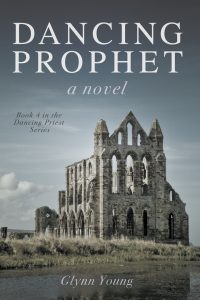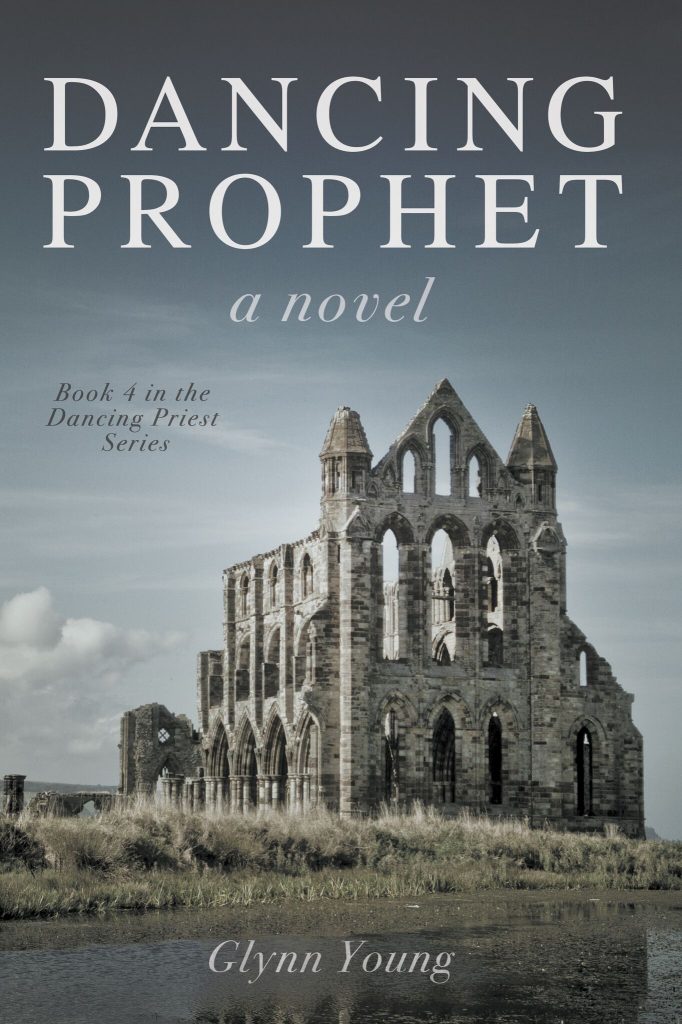
More than once, my wife has pointed out that my 2017 novel Dancing King and my new novel Dancing Prophet tend to pick on the Anglican Church, and specifically the Church of England.
It’s a fair point; the major tension in Dancing King is between the king, Michael Kent-Hughes, and the Church of England hierarchy at Lambeth Palace. Michael is speaking at churches for the need for reformation, and then makes a blow-out speech at a conference of bishops. Lambeth strikes back, however, employing all sorts of stratagems and accusations.
In Dancing Prophet, scandal erupts. What looks contained to one church is actually broader and deeper, involving churches and dioceses across the country and well beyond. The introductory sentence reads this way: “The match that ignited the reformation of the Church of England was lit by three teenagers.”
The heart of this story was written more than a decade ago, and then rewritten (many times) over the years. In one sense I did pick on the Church of England – the idea of the scandal in Dancing Prophet is actually inspired by the real institutional crisis the Catholic Church has been struggling with. In the story, Michael will realize that the situation is beyond reformation; the church as he’s known it is gone.
 Dancing Prophet is fiction, but like all fiction, it can’t help but reflect the times in which it’s written. When the history of our times comes to be written, it may be title (or subtitled) “The Age of Institutional Crisis.” Our government structures aren’t working; the sorry spectacle of a U.S. Senator questioning a candidate for the Supreme Court about the references to body noises in his high school yearbook isn’t even funny as much as it is tragic.
Dancing Prophet is fiction, but like all fiction, it can’t help but reflect the times in which it’s written. When the history of our times comes to be written, it may be title (or subtitled) “The Age of Institutional Crisis.” Our government structures aren’t working; the sorry spectacle of a U.S. Senator questioning a candidate for the Supreme Court about the references to body noises in his high school yearbook isn’t even funny as much as it is tragic.
Our language has become the language of extremes, suggesting a mutual contempt that’s hard for me to fathom. I’ve stopped reading the editorial and op-ed pages of my hometown newspaper; there’s virtually nothing in it that one could call a reasoned argument. Lots of polemics, to be sure; lots of barely disguised contempt for any opinion, belief, or value other than what the editorial and op-ed writers agree with. Snark rules.
The church universal is in crisis as well. Mainline Protestant denominations in the United States are in membership free fall. Evangelical megachurches are afflicted by their leaders abusing women and elder boards refusing to believe it, until significant damage is done. The Catholic Church is being torn apart. This looks like a winnowing of the church to me, a winnowing that will leave a smaller and perhaps stronger church.
This isn’t the time for reasoned arguments. This is the time for rule by the mob. I watch the news coverage, and I see the mob racing through the halls of Congress, screaming at senators and congressman. This is rhetorical violence approaching physical violence.
Some have compared this to the declining days of the Roman Empire; it’s closer, I think, to the declining days of the Roman Republic.
 This is the world partially depicted in Dancing Prophet. Michael Kent-Hughes has been thrust into a position he never expected and never sought. He is not only dealing with ecclesiastical failure; he is also dealing with politicians increasingly reluctant to take responsibility and a London governing authority that ceases to work due to political disfunction.
This is the world partially depicted in Dancing Prophet. Michael Kent-Hughes has been thrust into a position he never expected and never sought. He is not only dealing with ecclesiastical failure; he is also dealing with politicians increasingly reluctant to take responsibility and a London governing authority that ceases to work due to political disfunction.
Early in the story, two of the leading characters in Dancing Prophet are discussing how Michael came to occupy his position. Here was Michael, with no military background, no royal upbringing, and in fact nothing to recommend him for the position of king. He was a Church of England priest, and a young one at that, without any hierarchal experience.
And here’s what one of the characters says:
“God picks the man needed for the job at hand. And isn’t it fascinating that Michael had essentially been exiled to the hinterlands as a child, reared completely away from anything even remotely royal, felt called into the priesthood when he was relatively young, and was then sent to the outer edges of the Anglican world, away from the center and all that the center implied. God was preparing Michael, as surely as you and I are sitting here. And He was less interested in military and palace experience and far more interested in raising up a man after His own heart.”
And that’s the hope of Dancing Prophet, that even in the darkest times, God is raising up men and women after His own heart.
Top photograph by Micah Williams via Unsplash, and lower photograph by Oliver Sjostrom, also via Unsplash. Used with permission.


 Venneman won’t do any and everything his client (in the novel, the Archbishop of Canterbury) asks, but it’s less a matter of ethical concerns and more a matter of what will and won’t work. He’s working for church officials he feels profound disdain for, and he’s working against Michael Kent-Hughes because he hates the monarchy. Mr. Venneman has his own agenda, and he’s ruthless in pursuing it.
Venneman won’t do any and everything his client (in the novel, the Archbishop of Canterbury) asks, but it’s less a matter of ethical concerns and more a matter of what will and won’t work. He’s working for church officials he feels profound disdain for, and he’s working against Michael Kent-Hughes because he hates the monarchy. Mr. Venneman has his own agenda, and he’s ruthless in pursuing it.

 Today, the palace has 775 rooms, including 19 State Rooms, 52 royal and guest bedrooms, 188 staff bedrooms, 92 offices, and 78 bathrooms.
Today, the palace has 775 rooms, including 19 State Rooms, 52 royal and guest bedrooms, 188 staff bedrooms, 92 offices, and 78 bathrooms. Michael and his wife Sarah find the palace generally sound (Michael’s childhood friend Tommy McFarland, will lead a team of architects and building experts to determine the condition of the various royal properties). A number of internal systems – heating, kitchen appliances, and basic systems – will need to be replaced or repaired. The chief gardener, Richard Brightwell, will be directed to begin a major renovation of the gardens. The art gallery will be renovated and plans made for an exhibition. The staff will begin planning to reopen the palace for summer tours.
Michael and his wife Sarah find the palace generally sound (Michael’s childhood friend Tommy McFarland, will lead a team of architects and building experts to determine the condition of the various royal properties). A number of internal systems – heating, kitchen appliances, and basic systems – will need to be replaced or repaired. The chief gardener, Richard Brightwell, will be directed to begin a major renovation of the gardens. The art gallery will be renovated and plans made for an exhibition. The staff will begin planning to reopen the palace for summer tours. Michael and Sarah, overwhelmed by the size of the palace and trying to figure out how to call it “home,” will have a space on the upper floor of one of the wings renovated for the entire family, resembling their home in San Francisco.
Michael and Sarah, overwhelmed by the size of the palace and trying to figure out how to call it “home,” will have a space on the upper floor of one of the wings renovated for the entire family, resembling their home in San Francisco.
